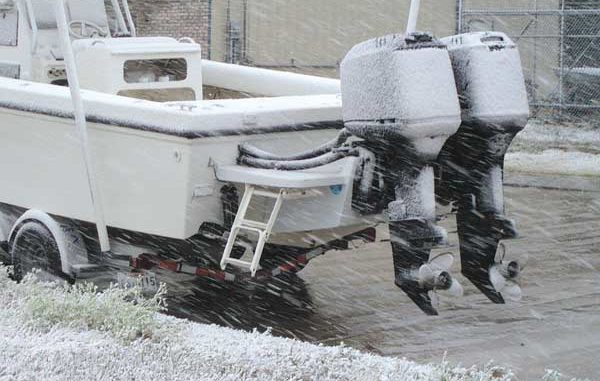
It’s now or never for duck hunters who just can’t get enough of the thrill of committed birds diving into a meticulously set out spread.
As we move into the colder months of the year, you may be questioning whether or not you should winterize your boat. In Louisiana, our winters tend to be mild compared to our neighbors in the northern half of the country. Up north the temperature drops so much that most of the lakes and rivers turn to ice. They have no choice but to remove their boats from the water and basically park them until springtime arrives.Winterizing boats up north is an absolute must, but here in our milder climate, we have the option of winterizing or keeping our boats ready to be used year around.
It is not unusual for us to have freezing temperatures one day and record highs just a few days. Oftentimes, we will have bright sunshine and a blue sky to go along with those record-high temperatures.
Days like these, you may want to take your boat out for some fun on the water. If you had winterized your boat, you would not be able to take it out because the next time the temperature dropped, you would have to winterize the boat all over again.
Instead of winterizing, consider just maintaining your boat in running condition with a contingency plan for the times when the temperature drops below the freezing mark.
If you are an outboard motor owner, you have the least amount of preparation to do in case of a freeze. Outboard motors rely on seawater that is pumped up from the lower unit into the engine power-head to keep the engine cool while running. Because this water is simply circulated from the sea through the power-head and back to the sea, there are no chambers or compartments that hold water inside your engine.
When there is a freeze predicted, all you have to do is tilt your outboard down to the vertical running position, and all water in the engine block, exhaust chamber and lower unit will simply drain out.
If there is no water, there is nothing to freeze and no damage will be done. This is true of both two- and four-cycle outboards. If your boat is stored at a location some distance from your home, you should simply keep the engine tilted down whenever it is in storage, and in this way it will always be protected.
If you have an inboard-outboard or a straight inboard engine, you will have to do a little more work to protect your engine from freezing. Even though these engines also rely on seawater to cool them, they unfortunately have several areas where the water remains trapped inside and if the temperature drops far enough, this water could freeze and damage your engine.
The engine block and the engine exhaust manifold(s) both hold water inside of them, and either or both could be damaged if this water freezes. Fortunately, all of these water compartments have drain systems that will allow you to drain the water out and protect your engine from damage.
You will need to check your engine service manual or perhaps your local engine repair shop to find the location of each of these drains. Most will have a plug that you simply remove and allow the water to drain out.
I would recommend that you reinstall these plugs immediately after draining the water. Most engine blocks and manifolds are cast iron, and if the plugs are left out, rust can develop in the threads that the plug screwed into. This would prevent you from being able to install the plug at a later date. Also keep in mind that if you do reinstall the plugs immediately after draining the water, your boat will be ready to take out when ever the weather permits.
If you have decided not to winterize but instead keep your boat ready to use, there are a few other simple maintenance procedures you should do. The most prevalent problem I see with engines that are not used on a regular basis is gum and varnish build-up in the carburetors. Gum and varnish form when the engine is not used for several weeks and the gasoline in the carburetors evaporates.
It is very simple to avoid this problem. All you need to do is not allow the gasoline to evaporate. This is accomplished by running the engine at least once or twice a month. Running your engine can be as easy as hooking up the garden hose to your engine flushing device and starting the engine. Allow the engine to idle for 5 to 10 minutes, and then shut it off. This will replenish the supply of gas in the carburetors as well as lubricate all of the internal components of your engine. This is something you can do all year long whenever you are not using your engine for a prolonged period of time.
Other wintertime maintenance should include keeping your battery fully charged, greasing all pressure fittings, checking the oil level in your lower unit and periodically checking the air pressure in your trailer tires.
If you have any questions about your boat, motor or trailer, e-mail me at theboatdr@yahoo.com.


